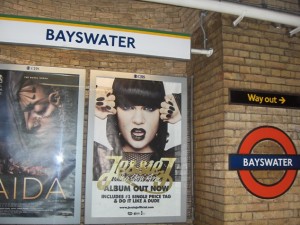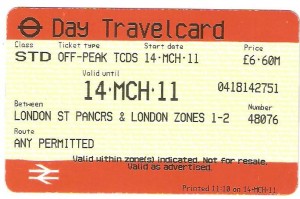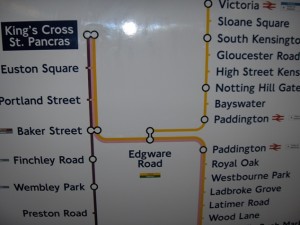How to Navigate the London Tube : Practical Tips
 The London Underground , known as the Tube, is the best tool for travelers to get from one point to another in a short amount of time. The system is very well organized and you should get the hang of it within the first couple of days in London.
The London Underground , known as the Tube, is the best tool for travelers to get from one point to another in a short amount of time. The system is very well organized and you should get the hang of it within the first couple of days in London.
Here are some tips which I gathered after my visit in London in the spring of 2011:
- The tube is only closed on Christmas Day (December 25). During the rest of the year, it opens at 5:30 a.m. and closes at midnight.
- First you need to buy a ticket or a day travelcard. Day travelcards and tickets are cheaper if you travel after 9:30 a.m. (so during the off peak hours). You’ll notice that the entrance to the station gets pretty crowded right before this hour. You cannot enter a station or leave a station without your ticket. Oyster cards are a good choice if you stay in London for a week or longer (and ensure you get the best price every time you travel).
- The price depends on how many zone you travel through. Day travelcards are excellent when you need to move around a lot and quickly between sights. Just tell the cashier where you need to get you and they’ll issue the correct ticket.
 If it’s too early (for example you need to catch an early flight) and the ticketing booth is not open, then you can use the ticket machines which accept exact change. If you are not sure how to use one, ask for help. There is always someone in the station willing to help.
If it’s too early (for example you need to catch an early flight) and the ticketing booth is not open, then you can use the ticket machines which accept exact change. If you are not sure how to use one, ask for help. There is always someone in the station willing to help. - Now you need to get a map (pdf file). You can get them for free or, if you need a complex travel map, with all the sights, you can get one from the newspaper stands in the stations. You can see that the lines are clearly marked and are color coded (and they also have names). The stations are also clearly marked. The stations which connect two or more lines are also clearly marked. There are maps besides each platform so you can easily figure out which line to take in which direction. The stations which connect to the National Rail System are also marked.
- Now locate on the map the station you are at. Then look for the station where you need to get off. Figure out which line goes there and take a look at where it terminates. You need that information because you’ll hear it in the train. They also announce which important sights can be reached from the next stop.
- As a simple rule: if the station you need to get off at is not on the map, change the platform. If you cannot find it on the map besides the other platform(s), then ask someone at the station because you probably are in the wrong station.
 If you took the wrong train (or the right train in the wrong direction), get off as soon as you realized it (usually right after they announce the coming stations and where it terminates). Take the train back to the station you came from and now board the right train.
If you took the wrong train (or the right train in the wrong direction), get off as soon as you realized it (usually right after they announce the coming stations and where it terminates). Take the train back to the station you came from and now board the right train. - You’ll often hear “mind the gap” before approaching a station. Usually that gap is small enough not to cause any issues but pay attention if you wear high heels.
- If a train runs late, it will be announced. Works are in progress in various stations and along the lines, so this might happen. But don’t worry; the trains aren’t delayed for too long.
- When you get out of the station, follow the “Way Out” sign. Close to the exits you’ll see signs which show the attractions close by.
- And most important: do not be afraid to ask questions! The personnel are very attentive with you and you will be helped to find your way.
Photo credit: Cristina Puscas and may not be used without permission